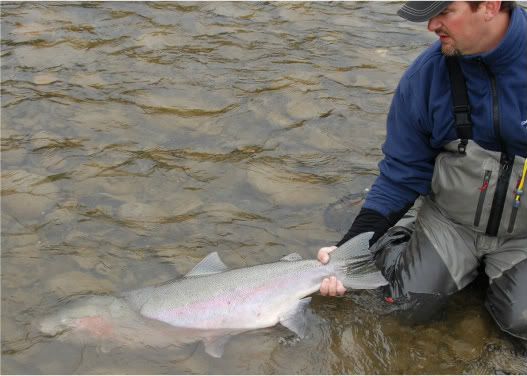Mainly impacts Commercial fishing, but some new recreational fishing changes. The one thing I hope they take into consideration is that all of the commercial bottomfisherman will resort to some other form of fishing, which adjusts the commercial pressure on other species. Here is the article from King5.com:
Bottom-fishing banned along West Coast
09/14/2002
Associated Press
PORTLAND, Ore. - Federal regulators on Friday voted to ban bottom-fishing next year on most of the Continental Shelf from Canada to Mexico.
The action, meant to stave off a catastrophic collapse of some Pacific Coast groundfish populations, is the strictest regulation of West Coast fishing in history. It ushers in a new era of fishery management that is based on how deep anglers can fish rather than harvest limits.
The ban promises to send shock waves through coastal economies already hurting from restrictions on logging and salmon fishing.
Sport and commercial fisheries generated $1 billion in income for the West Coast in 2001. Commercial landings were worth nearly $230 million, of which $62 million came from groundfish species.
The new limitations expand on emergency closures imposed last June. The Pacific Fishery Management Council, which voted late Friday, regulates Pacific waters from three to 200 miles offshore.
"It's pretty scary for everybody involved. The potential impacts for every fishing industry up and down the coast are pretty severe. It's like we are cutting off our arm to save our life," said Steven Kupillas, groundfish observer liaison with the Pacific States Marine Fisheries Commission.
Groundfish include more than 80 species, many of which have healthy populations. But over the past three years nine species have been declared overfished, despite steadily more restrictive harvest limits.
Rebuilding the rockfish species could take as much as a century for some, because they can live up to 90 years and produce young only sporadically.
The cutbacks were precipitated by scientific findings that four species of rockfish—a staple of party fishing boats and fish markets, where they are often sold as red snapper—were in worse trouble than thought. They are bocaccio, yellow-eye, canary and dark blotched rockfish.
Environmentalists also won lawsuits requiring the council to control bycatch, when species that cannot be landed due to harvest limits are thrown overboard dead after being netted along with other species that can be landed.
For commercial bottom trawlers north of Cape Mendocino on the Northern California coast, the council banned fishing between depths of 600 feet and 1,500 feet, with exceptions for petrale sole fishing outside of depths of 150 fathoms. During the summer the inshore boundary will move to 450 feet. South of Cape Mendocino, the council banned commercial trawling between the depths of 360 feet and 1500 feet. In the winter months, trawling is banned between depths of 300 and 900 feet.
For fixed gear, such as longlines and traps, the council will require boats to fish deeper than 600 feet off the Washington coast. For Oregon and Northern California, they banned fishing in waters shallower that 162 feet and deeper than 600 feet; south of Cape Mendocino, they banned fishing in waters shallower than 120 feet and deeper than 900 feet.
"The fixed-gear fishermen are basically going to be put out of business, except for black cod," a species generally exported to Japan, said Bob Alverson of the Fishing Vessel Owners Association in Seattle.
Shrimp could be taken as long as nets are equipped with excluders, which allow fish to escape.
On recreational fishing, generally done in shallow waters, the council restricted daily bag limits to 10 rockfish with no more than two canary rockfish and no yelloweye rockfish in Washington. In Oregon and Northern California, they kept the bag limit to 10, with one canary rockfish and one yelloweye rockfish.
"The recreational restrictions are just as difficult as the restriction on commercial," said council Chairman Hans Radke. "Nobody's free. Nobody's not hit by this."
The council cut harvests of the most overfished species of rockfish to extremely low levels: 172 metric tons for darkblotched rockfish, 41 metric tons for canary rockfish, 22 tons for yelloweye and 20 metric tons for bocaccio.
The new restrictions come as efforts to cut the groundfish fleet in half have foundered. Though fishermen and the council have endorsed a buyout plan, an appropriation of $50 million to fund it has stagnated in Congress for years.
_________________________
You know something bad is going to happen when you hear..."Hey, hold my beer and watch this"














 Previous Topic
Previous Topic Index
Index

